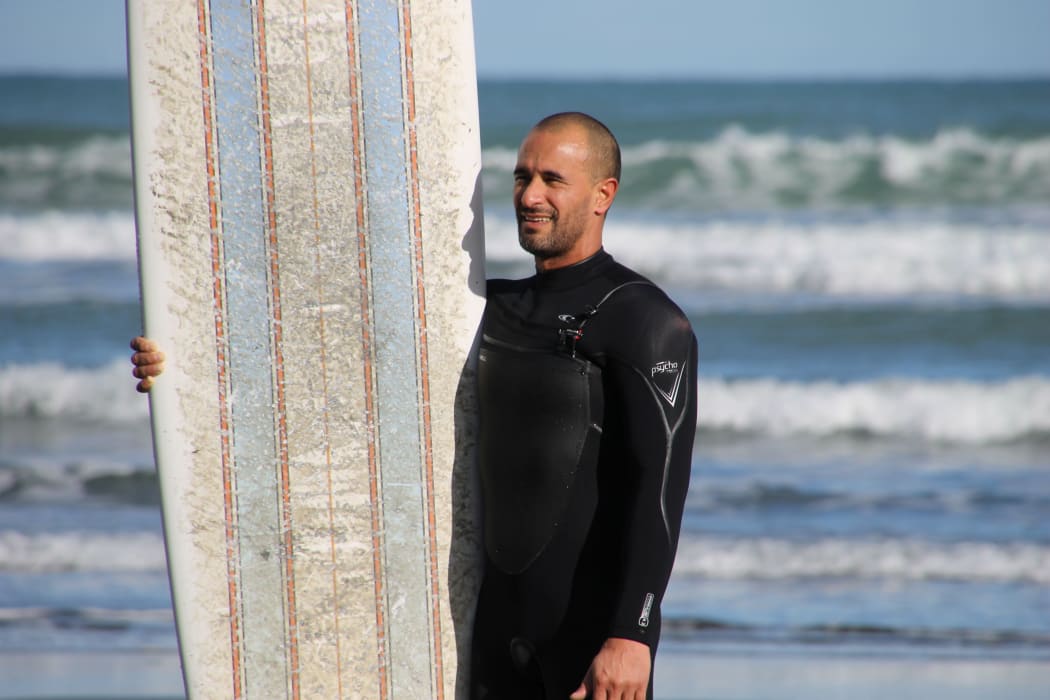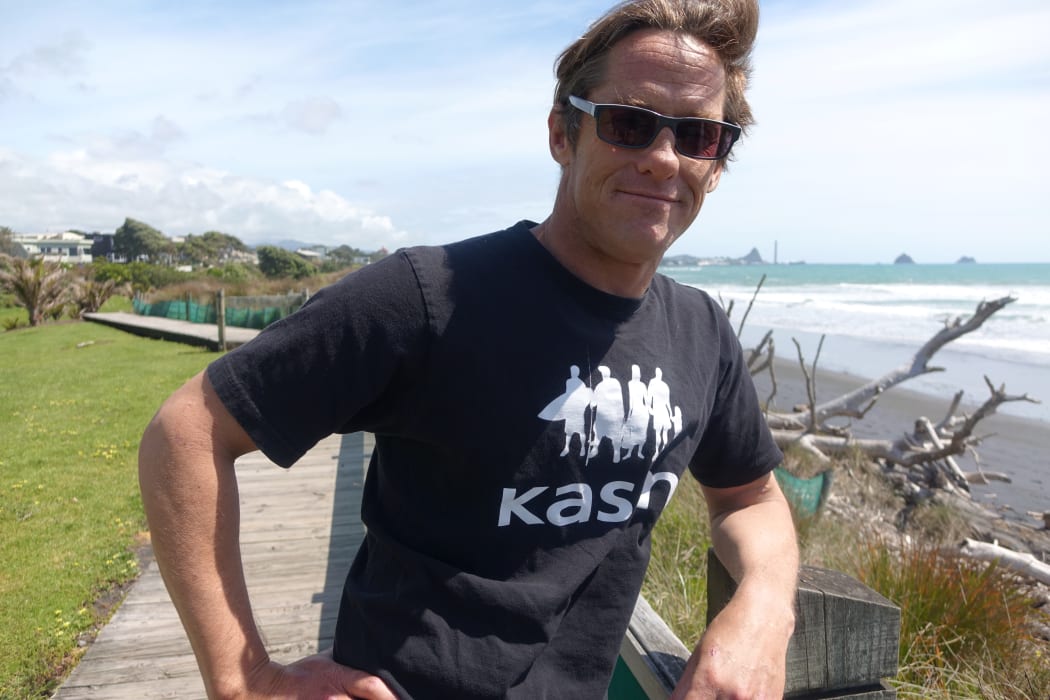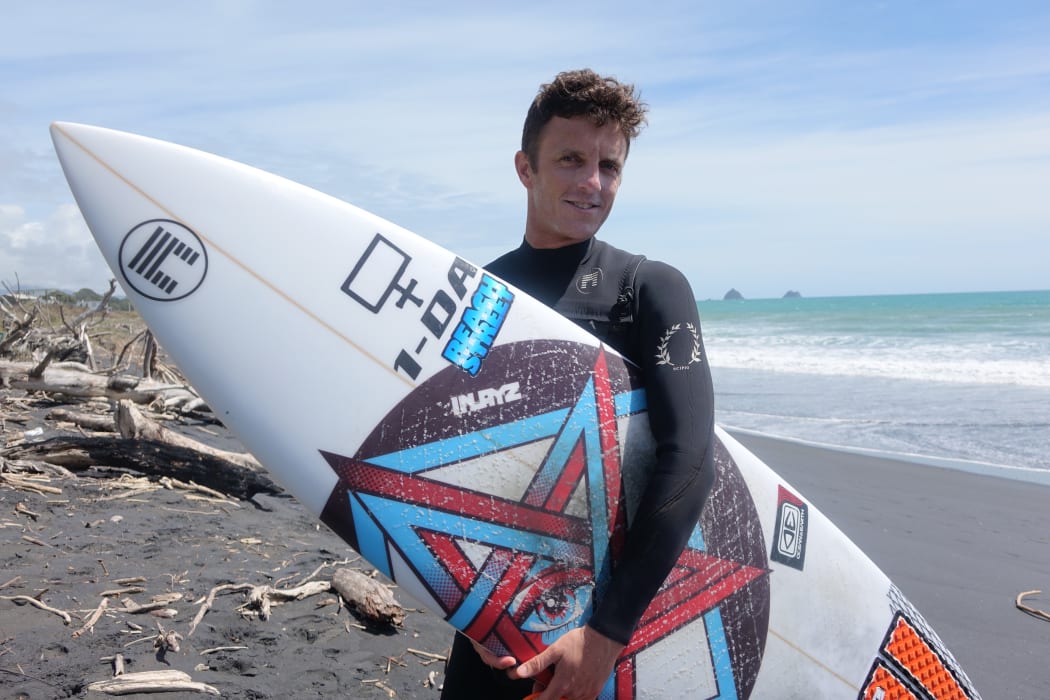A study into so-called 'surf rage' will find the behaviour is about safety, not patch protection, a regular surfer at one New Zealand's top breaks says.

Massey University psychology lecturer and keen surfer, Jhan Gavala, is researching 'surf rage' after experiencing it first-hand in Indonesia. Photo: Supplied / Massey University
Massey University psychology lecturer Jhan Gavala has begun a PhD about clashes out on the water, after experiencing surf rage while living in Indonesia.
"I definitely saw the transient surfers who would come in for one day or one week, he said.
"That would often end up in some flare-ups - usually just verbal flare-ups, but sometimes there were fights in the water and on the beach and then right across Echo Beach there were locals regulating the breaks."
He wanted to find out what was behind the phenomenon and how it related to surfers' behaviour out of the water.
Surf rage was usually affected by the number of set waves in relation to the number of surfers, their level of competitiveness and the different cultures coming together, Mr Gavala said.
"In every local crew they'll have their sheriff, they'll have maybe an enforcer - the kind of peacekeepers.
"Depending on who is in the water at the time it really influences the reaction that someone who breaks the etiquette [gets] - whether they are going to get a punch in the face or get told, 'What you did was wrong, don't do it again.'"
But Taranaki surfer Chris Wilkes said the etiquette used to create order in the unregulated world of surfing was often misinterpreted.
"I wouldn't call it surf rage at all really. It's much the same as road rage - if the rules aren't followed you are going to have an accident, and you're going to have road rage as a result of that.
"Any kind of any rage, as it were, is mainly more frustration than anything else."

Taranaki surfer Chris Wilkes says enforcing surfing etiquette is often misinterpreted as surf rage Photo: RNZ / Robin Martin
Mr Wilkes' home break at Stent Road near Opunake was not a place for beginners or the faint-hearted, who would soon be put in their place if they stepped out of line, he said.
Many of New Zealand's top breaks were challenging and surfers who looked out of their depth would be asked to move to the inside or to find a more suitable break.
"To me it's a health and safety issue - there [are] rules out there for a reason.
"If someone is in the wrong place they could hit you with their board or they could get run over themselves."
New Plymouth's Beach Street Surf Shop owner Jamie Mahia Andrews used to be guilty of surf rage but now taught surf etiquette.
Once a surfer was at a break suitable for their skill level there were only a handful of rules they needed to observe to avoid trouble, he said.
"It's considered bad etiquette when you've just got to the beach and you paddle straight out to the take-off zone ... and establish yourself as the deepest surfer in the line-up and you take every one of the set waves."
Other manoeuvres that were frowned upon included 'snaking' and 'dropping-in', which essentially described stealing waves off other surfers, Mr Andrew said.
"Everyone has the odd day when they drop-in on someone accidentally, but the next thing you should do is automatically apologise."
"If you show no respect to the person you've done the offending to, that can cause a lot of trouble."

Jarred Hancox says fights between surfers are not unheard of, but are usually local-on-local. Photo: RNZ / Robin Martin
Surfers at New Plymouth's Fitzroy Beach acknowledged surf rage was an issue.
Ultra-distance runner and 25-year surfing veteran Lisa Tamati said it was the ugly side of the sport.
"It is one of the things that put me off surfing there for a while. If you're not a local and you don't belong there, there's always a bit of how's-your-father going on out there."
Jarred Hancox said it was not uncommon to see fists fly, but it was usually local on local.
"They'll be one surfer going off at another and then the other will go, 'Let's do it', and there'll be a bit of a brawl going down on the beach," he said.
"But it's not the norm."
Mr Gavala planned to publish his findings in a series of articles over the three years of his doctorate.
He hoped to help people better understand surf rage and learn to control its darker side, he said.
He and two research assistants would be doing interviews and gathering data at the Aotearoa Maori Surf Nationals at Waitara this weekend.

